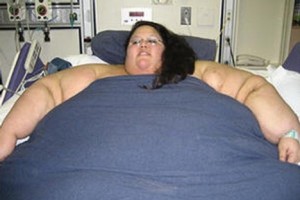Women and Heart Disease Across the Lifespan Part 1 (Young Women)
05/26/2010Premature Heart Disease Common in Indians and South Asians
10/21/2009Heart disease is the number one killer of men and women in the United States. The prevalence of heart disease varies among ethnic groups. Immigrants from India (South Asia) have a four times greater risk of developing heart disease than other Americans. Indians are also more likely to develop premature heart disease, have heart attacks at an earlier age and develop diffuse disease due to a genetic predisposition and a multitude of lifestyle risk factors. This includes both vegetarians and non-vegetarians.
Genetic risk factors include: high lipoprotein (a) levels, elevated triglyceride levels and lower levels of less protective HDL (healthy) cholesterol. Indians are also more prone to have abdominal obesity, diabetes, sedentary lifestyles and diets high in fat and starches which can increase the risk of developing heart disease. The traditional Indian diet includes deep-fried foods (re-use of vegetable oil when cooking), coconut milk, roti, naan and other white breads, white rice, paneer (cheese), whole milk and high fat yogurt.
Even though Indians have a strong genetic risk for heart disease they can lower their risk by making healthy lifestyle changes.
Below are some tips that may help reduce the risk of heart disease:
- Avoid deep frying, try to broil, bake, steam instead
- Use low fat milk and dairy products
- Increase fruit and vegetable and fiber intake
- Use olive oil or canola oil, do not re-use cooking oil
- Avoid ghee (clarified butter)
- Increase intake of fish, nuts
- Decrease intake of starches like white rice, roti, white potatoes and naan
- Avoid eating all or majority of carbohydrates at one meal, do not skip meals
- Increase activity level (walking 30 minutes a day counts as exercise)
- Weight loss (lose abdominal fat, waist circumference goal men <36 inches, women <32 inches)
Lipoprotein (a) is a sub-class of LDL (Bad) cholesterol, when levels are elevated in the blood the risk for heart disease and stroke are increased. Elevated lipoprotein (a) levels are associated with premature heart disease and have little to do with diet or lifestyle, they are usually hereditary. All Indians/South Asians should have a lipoprotein (a) level checked at least once in their lifetime, preferably when they are younger since it is a marker of premature heart disease.
“Take Charge: A Woman’s Guide to a Healthier Heart” discusses how women can help control their cholesterol and other risk factors to prevent a heart attack, stroke and diabetes. “Take Charge: A Man’s Roadmap to a Healthier Heart” is due to be released Fall 2009. For more info visit www.heart-strong.com
Large Thighs Protect Us from Heart Disease and Premature Death?
09/11/2009Over the past year we have heard a lot about the increased risk for heart disease and diabetes with belly fat. But now we may also have to start measuring our thighs??
A recent study published on the British Medical Journal website (September 2009) states that adults with a thigh circumference less than 60 cm are at a higher risk for heart disease and premature death. This is the first study I came across reporting health problems related to thigh girth. This study followed 1463 men and 1380 women from Denmark for 10 years. The researchers found that adults with smaller thigh size were more likely to experience an early death and heart disease, even after taking body fat and other high risk factors (such as smoking and high cholesterol) into account. The authors suggest that the increased risk in men and women with narrow thighs may be related to too little muscle mass in this region which could contribute to problems with insulin sensitivity and lead to the development of diabetes and heart disease. The increased risk was observed in both adults with and without belly fat.
We will have to await future studies to see if these results are validated in other groups. For more heart healthy info visit www.heart-strong.com
6 Affordable and Effective Exercise Essentials
08/26/2009If you need inspiration to become more physically active, a push to get going or just want to have more fun, here are six of the best, easy-to-afford and effective pieces of exercise gear.
Using just one of these regularly will improve your fitness without straining your budget:
Resistance bands: Stretchy and fun, they do the work of weights but pack easily in a purse or pocket. Versatile for several body areas. ($3+)
Jump rope: Remember when you could jump for hours with your friends? You don’t need hours now—just 5 or 10 minutes of jumping (indoors, if you prefer) will boost your activity level and burn calories. ($3+)
Exercise mat: You’ll be more comfortable, with a safer grip, than exercising on a carpet or bare floor. That will help you be active more easily, for a longer time. ($15+)
Hand weights: Keep a set by the computer or TV and use while watching something entertaining. ($5+)
Exercise ball: Sized for your height, most of these come with their own pump for easy inflation (and reinflation). Great for strengthening various muscle groups. Use as a chair and you’ll get a bit of a workout just from balancing on it. ($15+)
Pedometer: Just put it on and in a day or two you’ll be more aware of how much (or little) you’re moving every day. Aim to increase your average daily steps by 5 percent every week until you reach 10,000 steps a day, a goal that the American Heart Association and other experts suggest. Then add more to increase benefits. ($10+)
Often, you can find fitness items such as exercise DVDs, roller skates, workout clothing and more at yard or garage sales for just a dollar or two.
If you’re interested in acquiring big home-gym equipment, yard sales and online community boards are great places to find barely used items. Recently, one site had offerings that included treadmills for $35 to $75, a weight bench for $1 and an elliptical machine for $180. Just remember that you’ll probably have to arrange for transporting the big and heavy pieces—as well as find a space for them in your home.
© 2009 National Women’s Health Resource Center, Inc. (NWHRC) All rights reserved. Reprinted with permission from the NWHRC. 1-877-986-9472 (tollfree). On the Web at: www.healthywomen.org.
Walk or Bike to Work to Decrease Your Heart Attack Risk
08/21/2009Can walking to work or riding your bicycle really lower your risk for a heart attack?
The CARDIA (Coronary Artery Risk Development in Young Adults, published in July 2009 issue of Archive of Internal Medicine) study followed over 2,300 men and women and found that active commuting to and/or from work really did help lower heart disease risk factors. Unfortunately only 16% of people in the study actually performed active commuting on a daily basis, more men than women.
Men who actively commuted had lower triglyceride (blood fat) levels, lower blood pressures, better insulin levels, lower weights, and higher HDL (good) cholesterol levels.
The number of women who participated in active commuting was too small to determine any significant health benefits but women who performed daily physical activity had healthier numbers.
Numerous factors may not make it feasible for you to walk or bike to your place of employment. But we always like to say that even SMALL CHANGES can make a difference. Try getting off the bus or subway one stop earlier and walking the rest of the way to work. If you have to drive to work, try parking your car further away from the door, which would allow some extra steps. Take a walk at lunch time. All Activity Counts!
“Take Charge: A Woman’s Guide to a Healthier Heart” discusses how women can help control their blood pressure and other risk factors to prevent a heart attack, stroke and heart failure. “Take Charge: A Man’s Roadmap to a Healthier Heart” is due to be released Fall 2009. For more info visit www.heart-strong.com
Is Obesity Becoming an Epidemic?
08/19/2009

We keep seeing in the news that more American adults (and even kids) are becoming overweight. Is this trend heading towards an obesity epidemic? The Centers for Disease Control recently released new statistics. Their latest survey reports that 26.1% of US adults in 2008 were obese compared to 25.6% in 2007. In Alabama, Mississippi, Oklahoma, South Carolina, Tennessee and West Virginia 30% or more were obese. NJ (our home state) is below the national average at 22.9%. Colorado was the only state with an obesity rate <20%. Now some really sad news: no state in the US showed a significant decrease in obesity between 2007 and 2008. Obesity increases a person risk for diabetes, heart disease and stroke. What does the future hold for the health of Americans?!?
Our new book “Take Charge: A Woman’s Guide to a Healthier Heart” discusses risk factors for heart disease and stroke and offers tips for women to decrease their risk and their family’s risk for future heart problems. Please visit www.heart-strong.com for more info.
Is Obesity Hereditary?
08/12/2009A recent study by Plymouth’s Peninsula Medical School found that obese mothers were 10 times more likely to have obese daughters. Obese fathers were 6 times more likely to have obese sons. An interesting finding was that children of the opposite sex were not affected. The researchers suggest that the increased obesity risk may be related to similar lifestyles rather than genetics.
This suggests the need to target parent’s eating and exercise habits in order to promote healthy lifestyles for adults and their children. We know children learn from their parents, this includes both good and bad habits. Parents need to become positive role models.
For more heart healthy info please visit www.heart-strong.com
5 Tips to Lower Blood Pressure
08/04/2009
High blood pressure increases your risk for stroke and heart failure (weakening and enlargement of the heart muscle). About 1 in 3 adults have high blood pressure in the United States. Medications of course can help to lower blood pressure and many adults need at least 2 or 3 different medications to control their blood pressure especially as they get older.
Here are a couple of lifestyle changes that can also help lower your blood pressure:
1) Low Sodium (salt) Diet – recommendation is less than 2,000 mg of sodium daily
2) Increase Potassium Rich Foods – recommendation is 4,700 mg of potassium daily. Good food sources of potassium include: Bananas, Dried beans, Tomatoes, Beef, Orange juice/grapefruit juice, Milk, Coffee, Potatoes, Kidney beans, Salmon/Halibut.
3) Exercise – Aim for 30 minutes 5 to 7 days every week
4)Weight loss (if overweight) or maintain healthy weight
5) Use fresh garlic (chop garlic and let sit for 15 minutes – this allows garlic to oxidize and gets converted to allicin which is the heart healthy part of garlic)
The goal blood pressure for all adult men and women is less than 120/80 (this includes adults taking blood pressure medications).
A recent Centers for Disease Control publication stated that ONLY ABOUT 30% of adults with high blood pressure have their blood pressure well controlled!!! This is an important health risk and you need to play an active role – follow the lifestyle changes listed above, monitor your blood pressure regularly, know your numbers, and discuss your blood pressure with your healthcare provider.
“Take Charge: A Woman’s Guide to a Healthier Heart” discusses how women can help control their blood pressure and other risk factors to prevent a heart attack, stroke and heart failure. “Take Charge: A Man’s Roadmap to a Healthier Heart” is due to be released Fall 2009. For more info visit www.heart-strong.com
“Energy Drinks” May Trigger Heart Problems
07/24/2009Energy drinks are touted to improve stamina and cognitive function. These beverages often contain caffeine and sugar which can lead to an elevation in blood pressure and heart rate. A recent study (published in the Annals of Pharmacotherapy, April 2009) evaluated the effects of energy drinks of 15 healthy 20 to 39 year olds. The participants drank 2 cans (containing 100 mg of caffeine each) daily for one week. Blood pressure and heart rate were monitored before, during and after the energy drinks were consumed. The heart rate increased approximately 8% on day 1 and 11% on day 7.
While the blood pressure increased approximately 8% on day 1 and almost 10% on day 7. These increases in heart rate and blood pressure would definitely be detrimental to people with known high blood pressure or heart disease but may also over time lead to heart problems in younger healthy adults.
If you are going to consume “energy drinks” you should do so in moderation !! Better yet avoid them if possible.
For more heart healthy info visit www.heart-strong.com
Alcohol and Liquid Calories
07/21/2009Remember all calories count! Since there is no nutritional label on your alcoholic beverage you might not think about the calories you are ingesting. These calories can add up over time even if you are only having a couple of beers or glasses of wine each week.
Wine (6oz glass) = 120 calories
Light beer (12 oz) = 100 calories
Regular beer (12 oz) = 150 calories
Wine cooler (12 oz) = 225 calories
Liquor, 80 proof (1.5 oz) = 100 calories
If you are having a mixed drink you also need to calculate what you’re combining your alcohol with.
Small pina colada (5 oz) = 245 calories
Margarita = 157 calories
Long island iced tea = 230 calories
These are estimates since every bartender mixes drinks a little different and portion sizes may vary. Remember alcohol does have some heart healthy benefits but in moderation: women one glass per day, men no more than two glasses per day. Cheers!!



 Posted by heartstrong
Posted by heartstrong 








